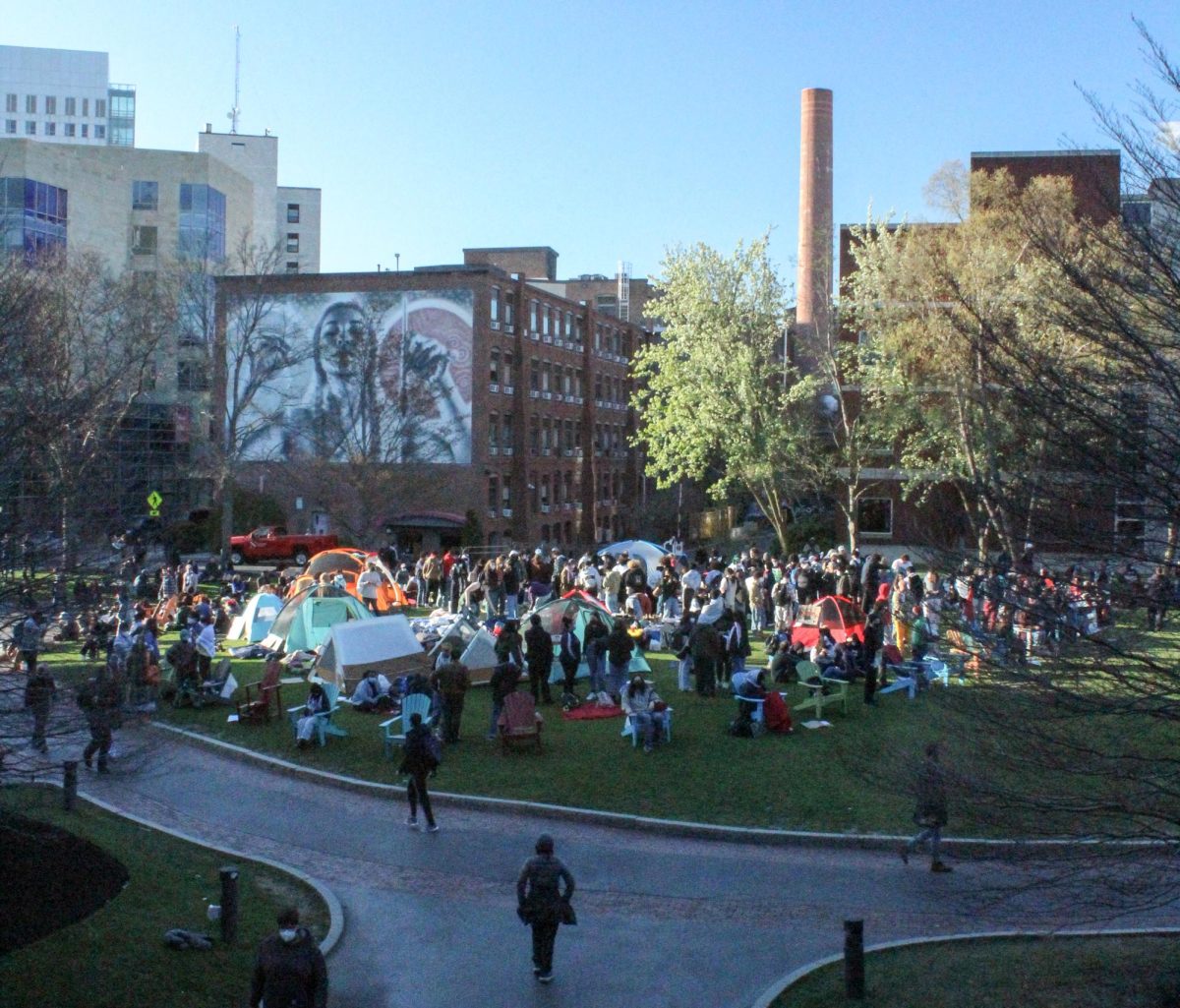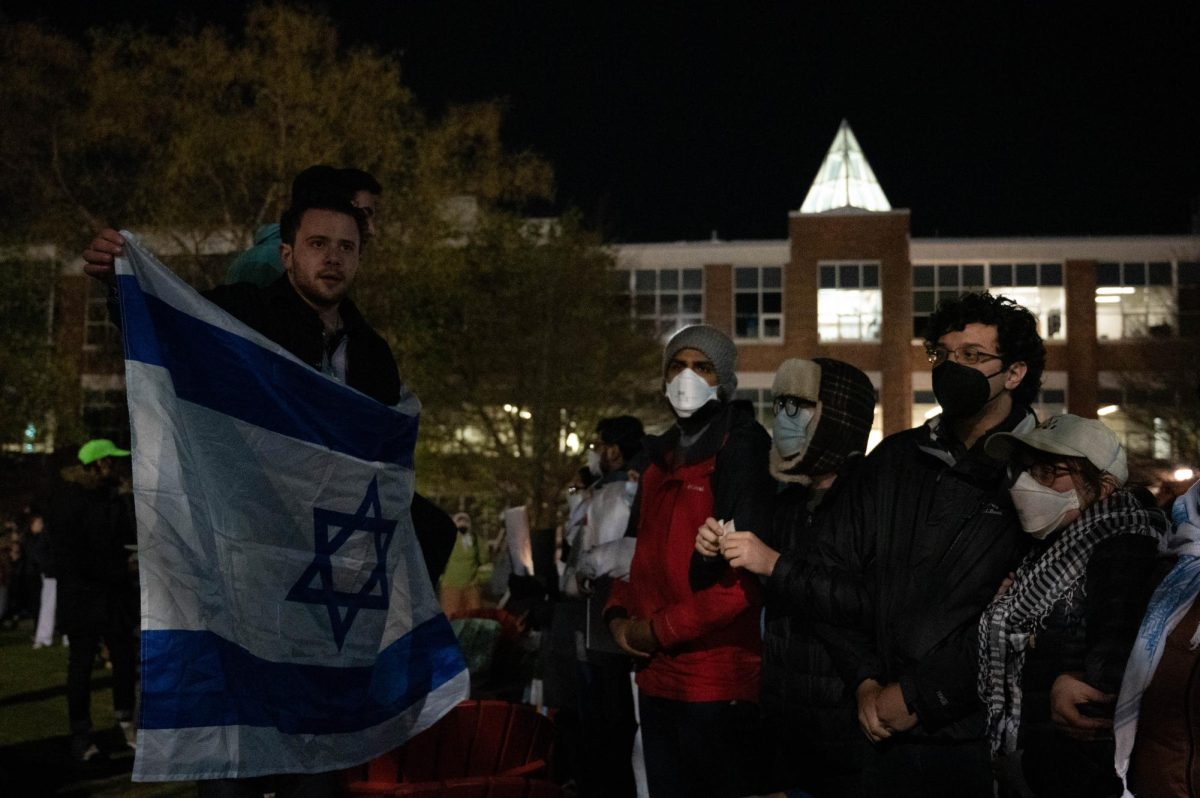By Madelyn Stone, News Staff

Visiting lecturer of music technology and composition John MacCallum’s work may involve self-engineered computer software, probability distribution functions and hybridization interfaces, but to him it is ultimately art.
“All [three] of my degrees are in music,” he said. “I started as a classical guitarist. And I just loved music but I didn’t necessarily like performing, so I got into writing music instead. I went through this period of working as a software engineer at CNMAT [Berkley’s Center for New Music and Audio Technologies] but it was still very much in the service of art.”
At an event sponsored by the Northeastern music department last Thursday, MacCallum shared his work along with the history of his composition techniques. When he is not teaching as a visiting lecturer at Northeastern, or working as a musical applications programmer at the University of California Berkeley, MacCallum composes variably synchronic music that evades a simple genre description.
“Imagine that everybody’s playing, all together, same tempo, synchronously, and at some point they begin to diverge and they all never come back,” he said during his presentation.
Musical artists have been exploring the removal of a unifying tempo since the mid-20th century, MacCallum explained in his presentation of works by composers like Conlon Nancarrow, Ianni Xenakis and Edmund Campion.
“I was interested in this idea of okay, well, you take away the thing that unifies the players, what do you do now?” MacCallum said. “Campion is using harmony and melody and things like that to unify these people. I was writing a piece for unpitched percussion.”
In 2010, MacCallum finished composing “Aberration,” a piece that uses software the composer developed himself while working at CNMAT.
“The tempos are in fact completely random,” MacCallum said. “They go off and they never come back again. The original tempo that they were playing remains in place for the rest of the piece, but nobody plays it.”
Though the individual tempos remain distinct through the rest of the piece, the three percussionists who performed “Aberration” recreated the starting music at times by combining precise selections of rhythms. As MacCallum explained, “at some point we’ll begin choosing the rhythms very carefully but from all the instruments to try to approximate that original tempo that’s going on.”
MacCallum went on to explain the meaning of his presentation’s title: “Asynchrony, Plesiochrony and Virtual Tempos,” descriptions that refer to the temporal concurrence of different rhythms.
“Plesiochrony is an awesome word,” he said. “‘Plesio’ means ‘almost’ or ‘nearly.’ The important thing about a plesiochronous system is that it’s never perfect and it never looks like it’s synchronous. So for it to be considered plesiochronous as opposed to asynchronous, the error has to fall within a certain range. In this case we can think about it metaphorically like the system becomes asynchronous if the stuff is so bad you can’t tell what it’s doing but you know I’m not like flying ships off to Mars or anything like that.”
Involving computer technology and math as much as music, the complex nature of the material attracted a diverse audience of professors and students.
Adam Straus, a sophomore technology major, said the event was a pleasant surprise.
“It’s kind of the entire thing I’m interested in, just like computer music and ways you can use it to make things that are totally not possible otherwise,” he said. “I thought it was great, totally interesting.”
The technological elements of MacCallum’s presentation also appealed to Max Riestenberg, a freshman math major.
“I’m a math major so I have almost no place here,” he said. “But I thought it was really interesting, from my perspective. Looking at the functions from a math perspective made some other concepts, like some of the challenges that he faced, seem a little bit more up my alley. I really like the idea of trying to fit the pieces of math and music together.”













